Image credit: Michael Steinberg (Pexels)
Wake Up, Gold Market! Otherwise Inflation Will Step on You
The Fed’s hawkish alerts seem like a voice in the wilderness to gold investors. However, a carefree attitude can backfire on them – in just a few months.
An epic battle is unfolding across the financial markets as the Fed warns investors about its looming rate hike cycle and the latter ignores the ramifications. However, with perpetually higher asset prices only exacerbating the Fed’s inflationary conundrum, a profound shift in sentiment will likely occur over the next few months.
The Fed has turned the hawkish dial up to 100. Yet, it’s remarkable how much the precious metal’s domestic fundamental outlooks have deteriorated in recent weeks. Yet, prices remain elevated, investors remain sanguine, and the bullish bands continue to play.
However, with inflation still rising and the Fed done playing games, the next few months should elicit plenty of fireworks. For example, with another deputy sounding the hawkish alarm, San Francisco Fed President Mary Daly said on Mar. 22: “Inflation has persisted for long enough that people are starting to wonder how long it will persist. I’m already focused on making sure this doesn’t get embedded and we see those longer-term inflation expectations drift up.”
As a result, Daly wants to ensure that the “main risk” to the U.S. economy doesn’t end up causing a recession.
|
“Even though we have these uncertainties around Ukraine, and we have uncertainties around the pandemic, it’ still time to tighten policy in the United States,” Daly said at a Brookings Institute event. “marching” rates up to the neutral level and perhaps even higher to a level that would restrict the economy to ensure inflation comes down. |
Reuters
Likewise, St. Louis Fed President James Bullard reiterated his position on Mar. 22, telling Bloomberg that “faster is better,” and that “the 1994 tightening cycle or removal of accommodation cycle is probably the best analogy here.”
|
“The Fed needs to move aggressively to keep inflation under control.” Bullard said in an interview Tuesday on Bloomberg Television with Michael McKee. “We need to get to neutral at least so we’re not putting upward pressure on inflation during this period when we have much higher inflation than we’re used to in the U.S.” |
Bloomberg
Falling on Deaf Ears
To that point, while investors seem to think that the Fed can vastly restrict monetary policy without disrupting a healthy U.S. economy, a major surprise could be on the horizon. For example, the futures market has now priced in nearly 10 rate hikes by the Fed in 2022. As a result, should we expect the hawkish developments to unfold without a hitch?
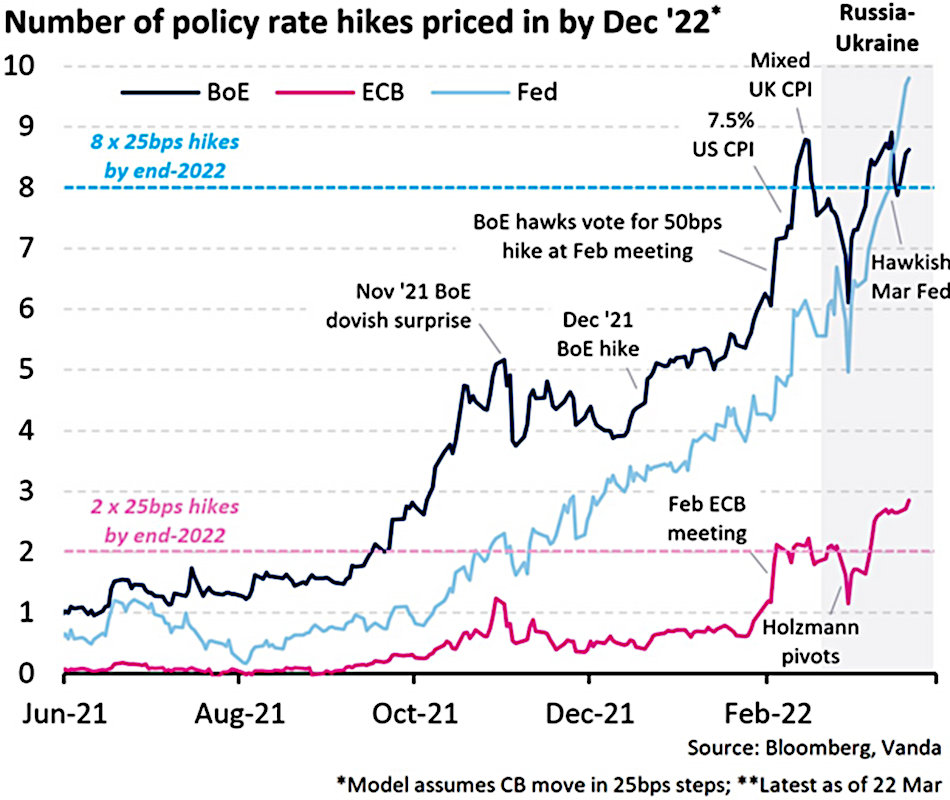
To explain, the light blue, dark blue, and pink lines above track the number of rate hikes expected by the Fed, BoE, and ECB. If you analyze the right side of the chart, you can see that the light blue line has risen sharply over the last several days and months. For your reference, if you focus your attention on the material underperformance of the pink line, you can see why I’ve been so bearish on the EUR/USD for so long.
Also noteworthy, have a look at the U.S. 2-Year Treasury yield minus the German 2-Year Bond yield spread. If you analyze the rapid rise on the right side of the chart below, you can see how much short-term U.S. yields have outperformed their European counterparts in 2021/2022.
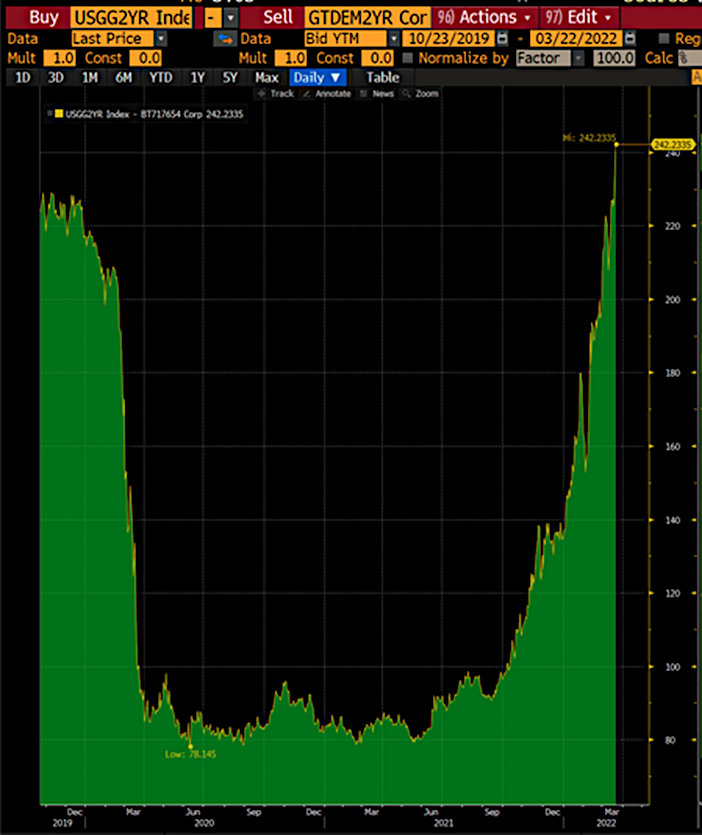
Source: Bloomberg
More importantly, though, with Fed officials’ recent rhetoric encouraging more hawkish re-pricing instead of talking down expectations (like the ECB), they want investors to slow their roll. However, investors are now fighting the Fed, and the epic battle will likely lead to profound disappointment over the medium term.
Case in point: when Fed officials dial up the hawkish rhetoric, their “messaging” is supposed to shift investors’ expectations. As such, the threat of raising interest rates is often as impactful as actually doing it. However, when investors don’t listen, the Fed has to turn the hawkish dial up even more. If history is any indication, a calamity will eventually unfold.
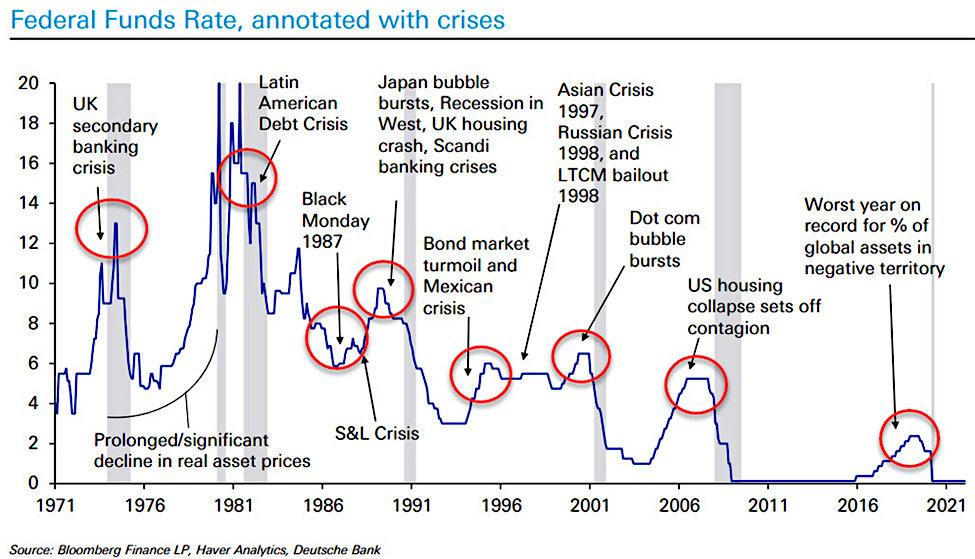
To explain, the blue line above tracks the U.S. federal funds rate, while the various circles and notations above track the global crises that erupted during the Fed’s rate hike cycles. As a result, standard tightening periods often result in immense volatility.
However, with investors refusing to let asset prices fall, they’re forcing the Fed to accelerate its rate hikes to achieve its desired outcome (calm inflation). As such, the next several months could be a rate hike cycle on steroids.
To that point, with Fed Chairman Jerome Powell dropping the hawkish hammer on Mar. 21, I noted his response to a question about inflation calming in the second half of 2022. I wrote on Mar. 22:
“That story has already fallen apart. To the extent it continues to fall apart, my colleagues and I may well reach the conclusion we’ll need to move more quickly and, if so, we’ll do so.”
To that point, Powell said that “there’s excess demand” and that “the economy is very strong and is well-positioned to handle tighter monetary policy.” As a result, while investors seem to think that Powell’s bluffing, enlightenment will likely materialize over the next few months.
|
“The labor market is very strong, and inflation is much too high,” Powell told a National Association for Business Economics Conference. “There is an obvious need to move expeditiously to return the stance of monetary policy to a more neutral level, and then to move to more restrictive levels if that is what is required to restore price stability.” In particular he added, “if we conclude that it is appropriate to move more aggressively by raising the federal funds rate by more than 25 basis points at a meeting, we will do so.” |
Reuters
Furthermore, with Goldman Sachs economists noting the shift in tone from “steadily” in January to “expeditiously” on Mar. 21, they also upped their hawkish expectations. They wrote:
“We are now forecasting 50bp hikes at both the May and June meetings (vs. 25bp at each meeting previously). The level of the funds rate would still be low at 0.75-1% after a 50bp hike in May, and if the FOMC is open to moving in larger steps, then we think it would see a second 50bp hike in June as appropriate under our forecasted inflation path.”
“After the two 50bp moves, we expect the FOMC to move back to 25bp rate hikes at the four remaining meetings in the back half of 2022, and to then further slow the pace next year by delivering three quarterly hikes in 2023Q1-Q3. We have left our forecast of the terminal rate unchanged at 3-3.25%, as shown in Exhibit 1.”
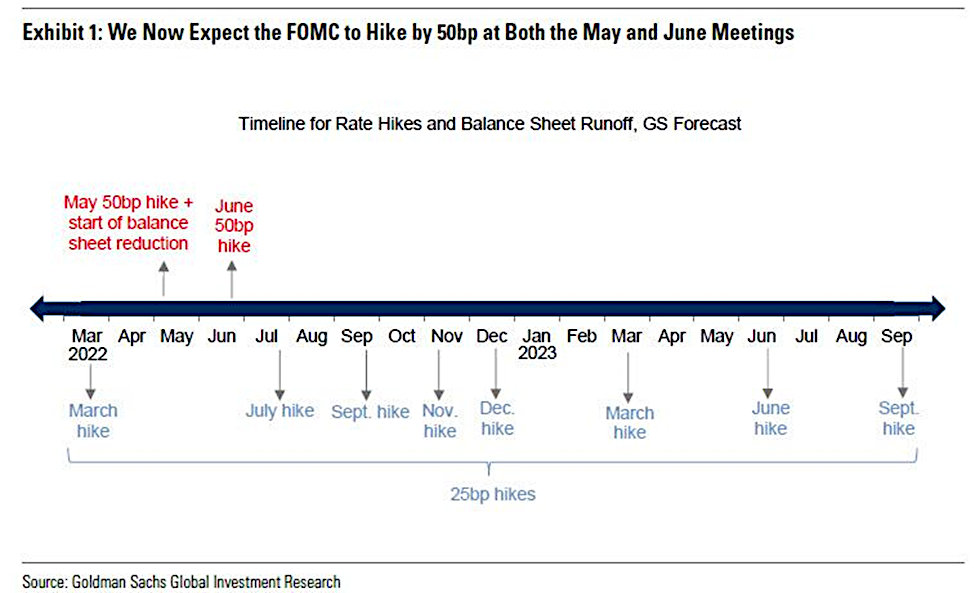
In addition, this doesn’t account for the Fed’s willingness to sell assets on its balance sheet. For context, Powell said on Mar. 16 that quantitative tightening (QT) should occur sometime in the summer and that shrinking the balance sheet “might be the equivalent of another rate increase.” As a result, investors’ lack of preparedness for what should unfold over the next few months has been something to behold. However, the reality check will likely elicit a major shift in sentiment.
In contrast, the bond market heard Powell’s message loud and clear, and with the U.S. 10-Year Treasury yield hitting another 2022 high of ~2.38% on Mar. 22, the entire U.S. yield curve is paying attention.
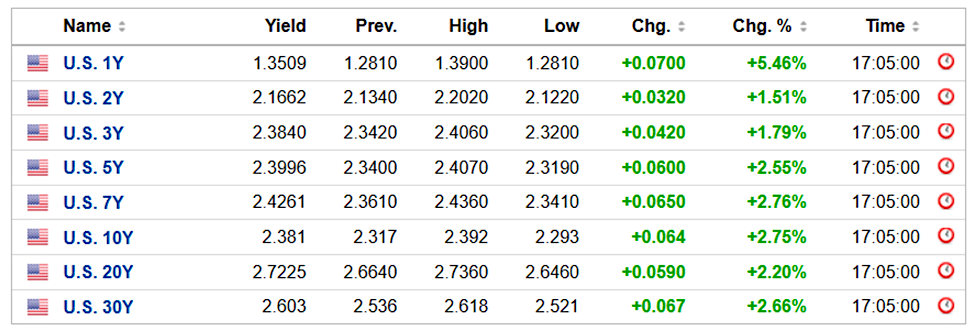
Investing.com
Finally, the Richmond Fed released its Fifth District Survey of Manufacturing Activity on Mar. 22. With the headline index increasing from 1 in February to 13 in March, the report cited “increases in all three of the component indexes – shipments, volume of new orders, and number of employees.”
Moreover, the prices received index increased month-over-month (MoM) in March (the red box below), while future six-month expectations for prices paid and received also increased (the blue box below). As a result, inflation trends are not moving in the Fed’s desired direction.

Richmond Fed
Likewise, the Richmond Fed also released its Fifth District Survey of Service Sector Activity on Mar. 22, and while the headline index decreased from 13 in February to -3 in March, current and future six-month inflationary pressures/expectations rose MoM.

Richmond Fed
The bottom line? While the Fed is screaming at the financial markets to tone it down to help calm inflation, investors aren’t listening. With higher prices resulting in more hawkish rhetoric and policy, the Fed should keep amplifying its message until investors finally take note. If not, inflation will continue its ascent until demand destruction unfolds and the U.S. slips into a recession. As such, if investors assume that several rate hikes will commence over the next several months with little or no volatility in between, they’re likely in for a major surprise.
Summation
Precious metals declined on Mar. 22, as the sentiment seesaw continued. However, as noted, it’s remarkable how much the metals domestic fundamental outlooks have deteriorated in recent weeks. Thus, while the Russia-Ukraine conflict keeps them uplifted, for now, the Fed’s inflation problem is nowhere near an acceptable level. As a result, when investors finally realize that a much tougher macroeconomic environment confronts them over the next few months, the shift in sentiment will likely culminate in sharp drawdowns.
|
About the Author: Przemyslaw |
Suggested Reading
 Inflation Seems Persistent, What Now?
|
 The Feds Fight Against Raging Inflation is a Process
|
 What is the Yield Curve?
|
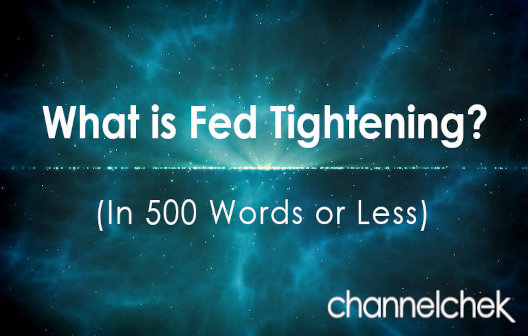 What is Fed Tightening?
|
Stay up to date. Follow us:

|

